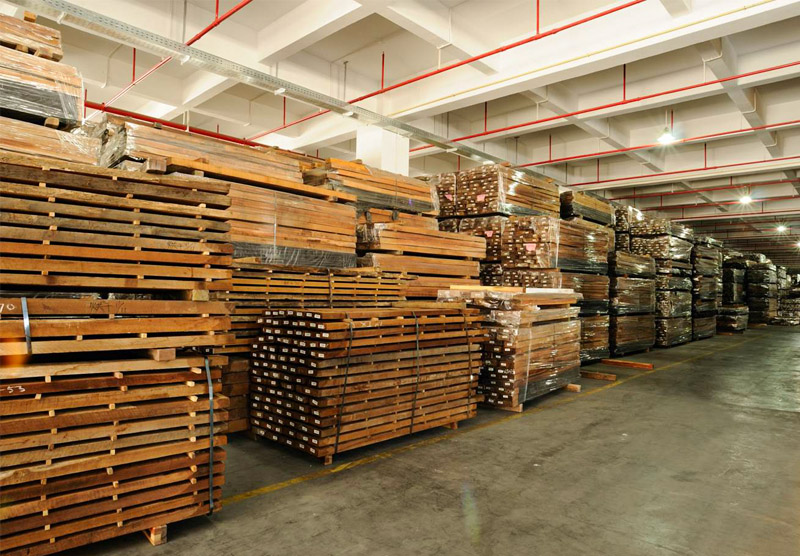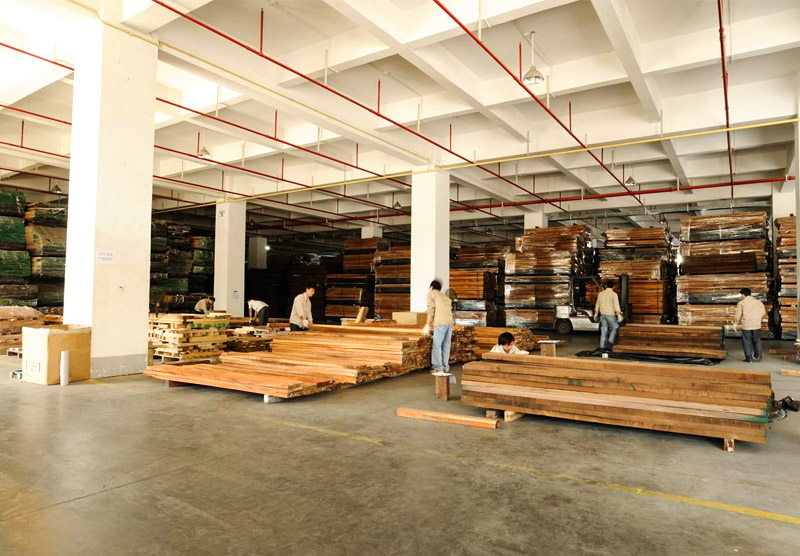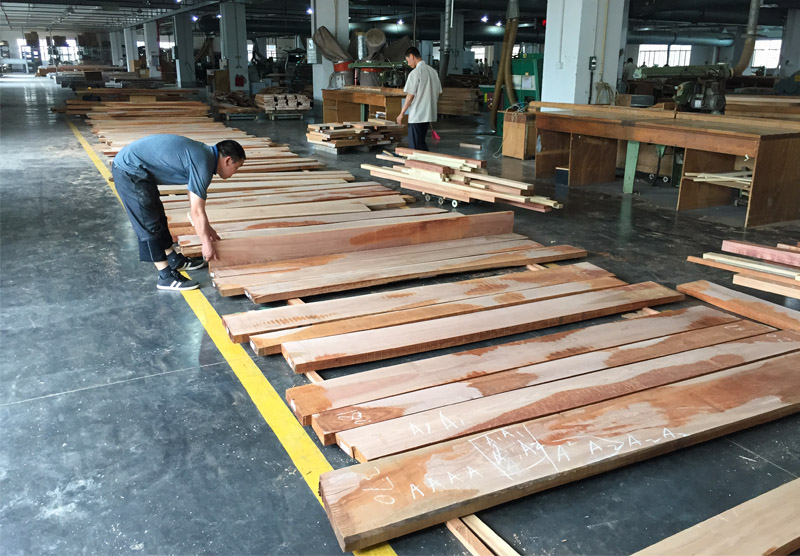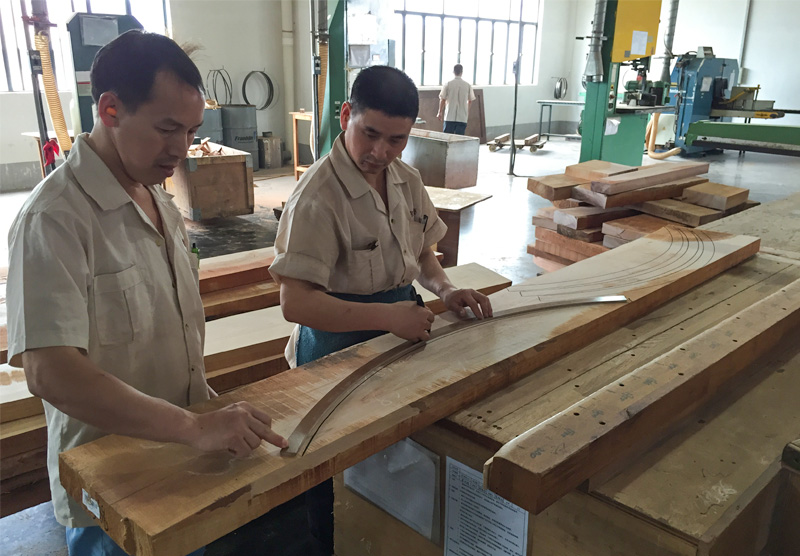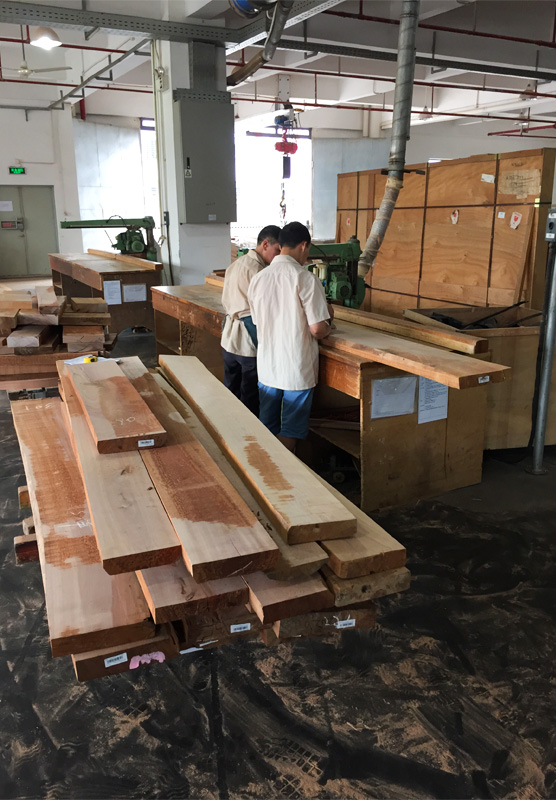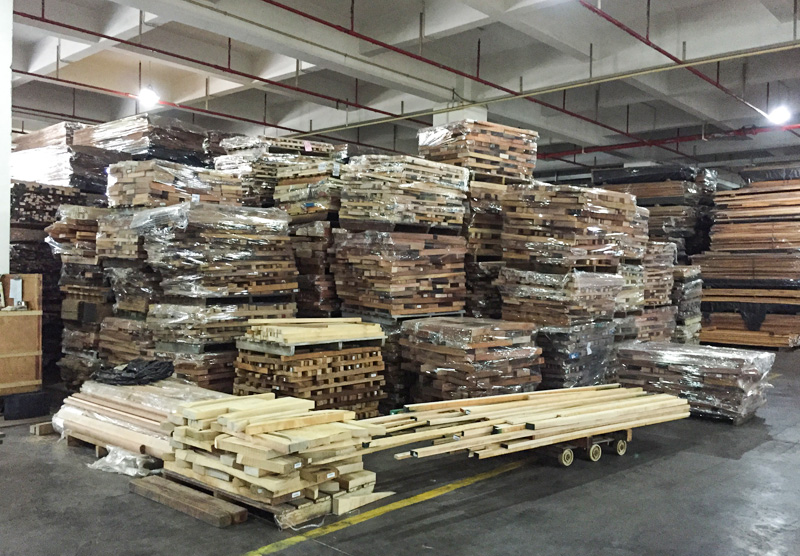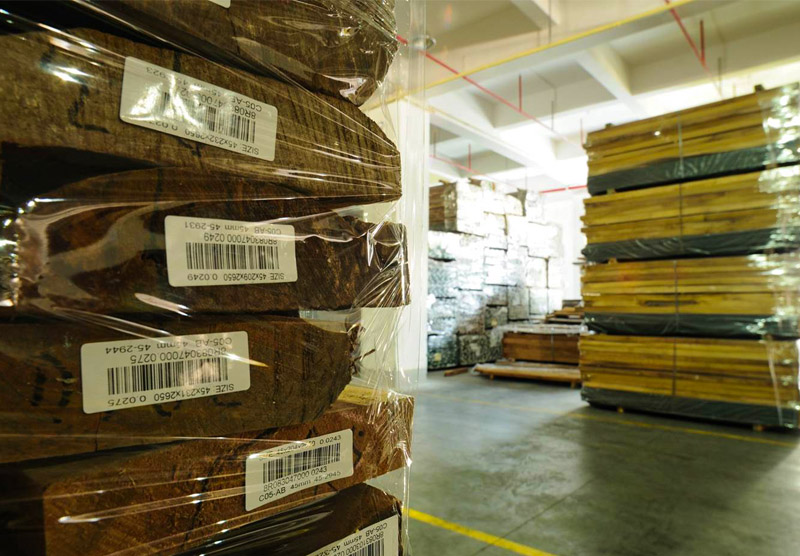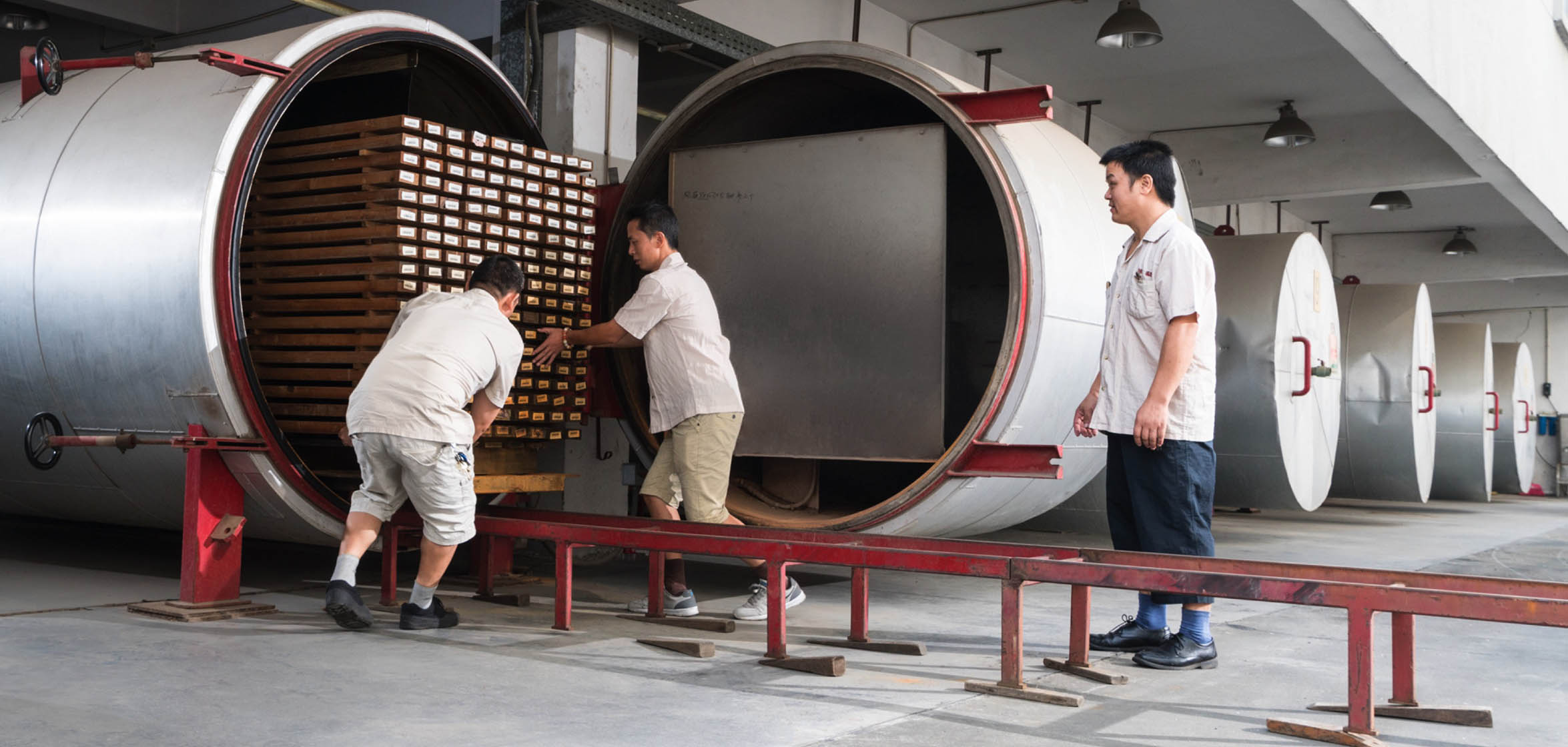
Wood drying (also seasoning lumber or wood seasoning) reduces the moisture content of wood before its use. When the drying is done in a kiln, the product is known as kiln-dried timber or lumber, whereas air drying is the more traditional method.
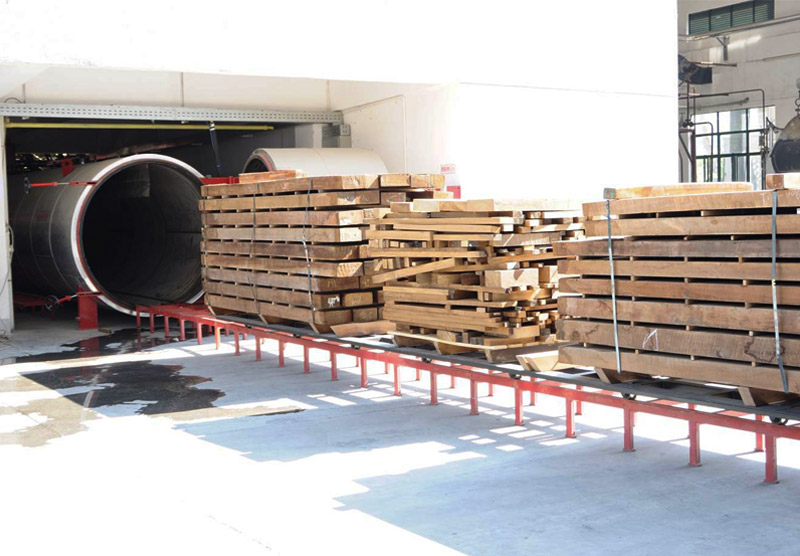
When wood is used as a construction material, whether as a structural support in a building or in woodworking objects, it will absorb or expel moisture until it is in equilibrium with its surroundings. Equilibration (usually drying) causes unequal shrinkage in the wood, and can cause damage to the wood if equilibration occurs too rapidly. The equilibration must be controlled to prevent damage to the wood.
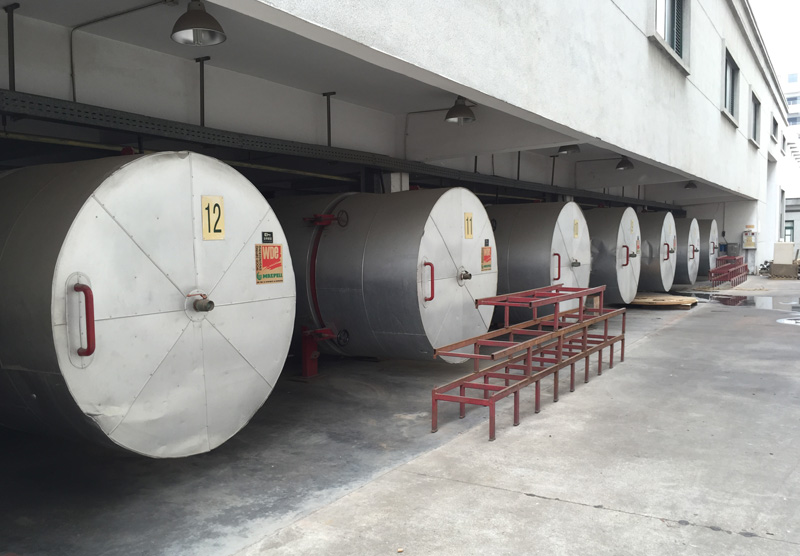
Chamber drying provides a means of overcoming the limitations imposed by erratic weather conditions. With kiln drying, as is the case with air drying, unsaturated air is used as the drying medium. Almost all commercial timbers of the world are dried in industrial kilns. Significant advantages of conventional kiln drying include higher throughput and better control of the final moisture content. Conventional kilns and solar drying both enable wood to be dried to any moisture content regardless of weather conditions. For most large-scale drying operations solar and conventional kiln drying are more efficient than air drying.
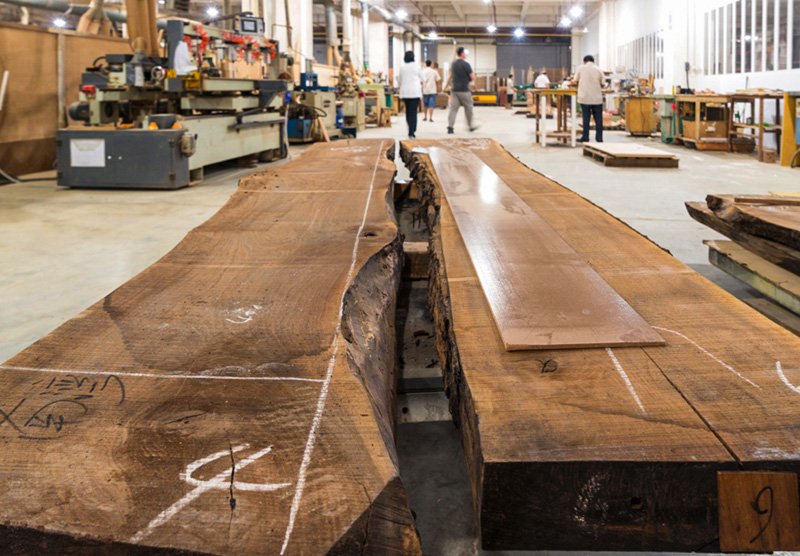
The relative humidity of air is defined as the partial pressure of water vapour divided by the saturated vapour pressure at the same temperature and total pressure. If the temperature is kept constant, lower relative humidities result in higher drying rates due to the increased moisture gradient in wood, resulting from the reduction of the moisture content in the surface layers when the relative humidity of air is reduced. The relative humidity is usually expressed on a percentage basis.
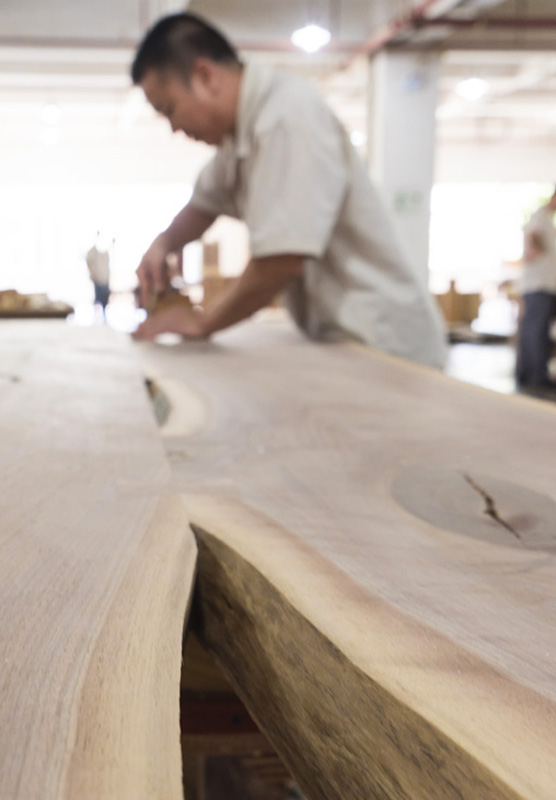
Highly refractory woods are slow and difficult to dry if the final product is to be free from defects, particularly cracks and splits. Examples are heavy structural timbers with high density such as ironbark (Eucalyptus paniculata), blackbutt (E. pilularis), southern blue gum (E. globulus) and brush box (Lophostemon cofertus). They require considerable protection and care against rapid drying conditions for the best results.
All measures that are taken to ensure a long life of wood fall under the definition wood preservation. Apart from structural wood preservation measures, there are a number of different (chemical) preservatives and processes (also known as timber treatment, lumber treatment or pressure treatment) that can extend the life of wood, timber, wood structures or engineered wood. These generally increase the durability and resistance from being destroyed by insects or fungus.
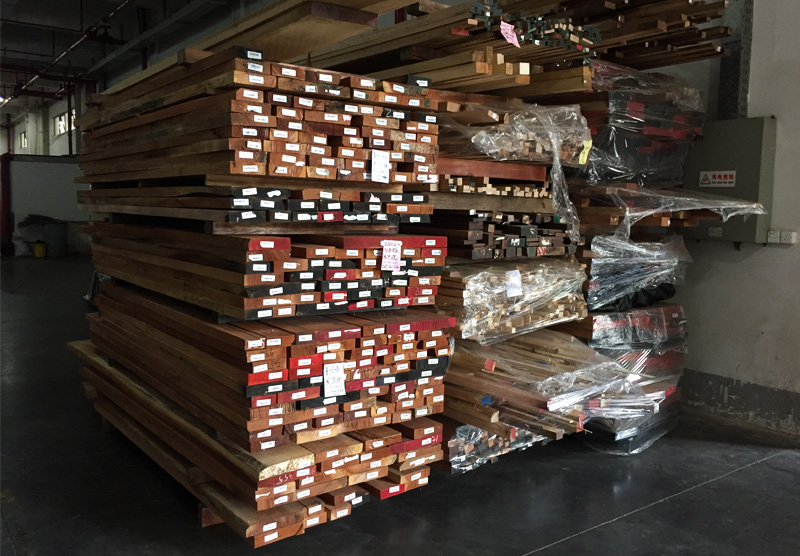
By going beyond kiln drying wood, heat treatment may make timber more durable. By heating timber to a certain temperature, it may be possible to make the wood fibre less appetizing to insects.
Heat treatment can also improve the properties of the wood with respect to water, with lower equilibrium moisture, less moisture deformation, and weather resistance. It is weather-resistant enough to be used unprotected, in facades or in kitchen tables, where wetting is expected. However, heating can reduce the amount of volatile organic compounds, which generally have antimicrobial properties
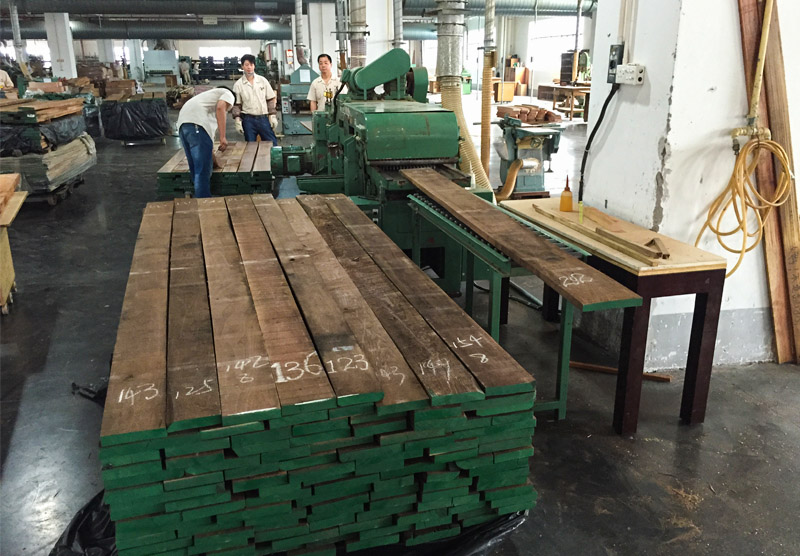
These species are resistant to decay in their natural state, due to high levels of organic chemicals called extractives, mainly polyphenols, providing them antimicrobial properties.
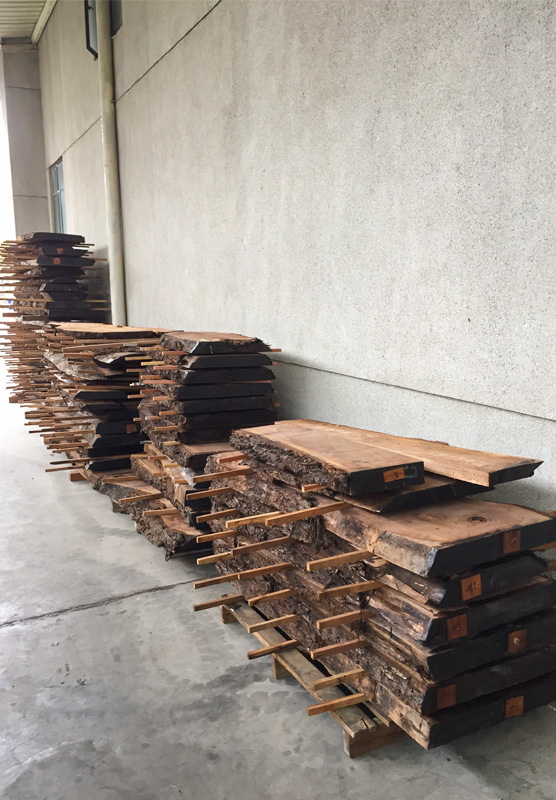
Keep it flat. Most veneers come as flat sheets, although flexible (paper- or adhesive-backed) veneer may be sold in a roll. Always unroll these materials and store them flat. Stack pieces on a flat surface with the largest on the bottom, as shown in the illustration. To form the next layer, place smaller pieces side by side, covering as much of the larger sheets as possible.
Apply light pressure. Place a sheet of plywood or particleboard (we use 3⁄4 ”sheets) on your veneer, covering the entire surface. The weight usually provides enough pressure to keep the veneer flat and straighten minor curling. If it doesn't, add weight (a few bricks will do). However, do not try to straighten badly buckled dry veneer with excess pressure because it may crack or split.
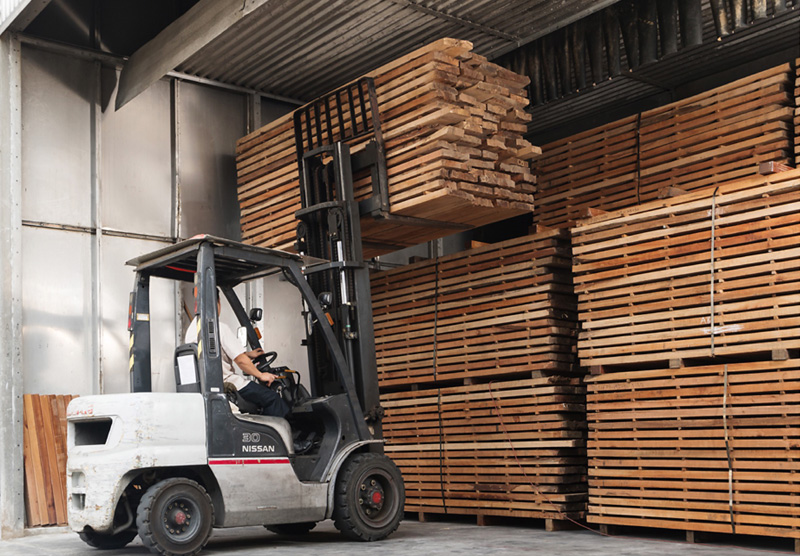
Keep sunlight away. Exposure to sunlight (the ultraviolet rays) may cause the veneer to fade or change colour. A protective covering of burlap or heavy cloth blocks the sunlight.
Maintain proper humidity. Veneer has about 12-percent moisture content after cutting and processing. The material should stabilize between 6 and 10 percent in a heated room. Radical changes in relative humidity may cause extreme expansion or contraction and curl or crack the veneer. You can measure the moisture content precisely with a moisture meter, although maintaining relative air humidity between 45 and 60 percent generally ensures proper moisture stabilization.
